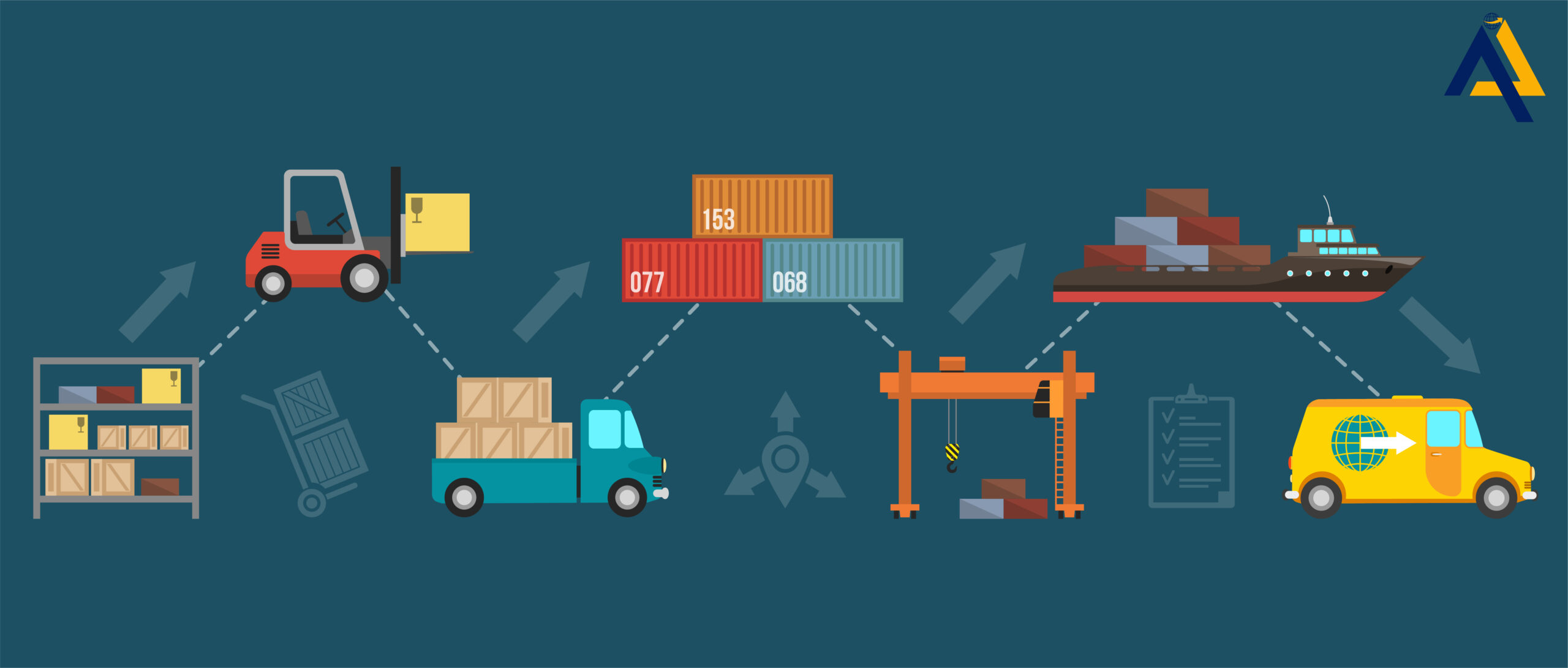The supply chain is the backbone of e-commerce, from product sourcing to delivery to customers. Fast, dependable, and efficient supply chain management is essential for the success of e-commerce businesses in the world of online shopping.
In this blog, we’ll look at how e-commerce business owners can improve their supply chain management to boost revenue and customer satisfaction.

Sourcing / Buying
Sourcing is the first step in the supply chain management process, and it entails locating suppliers and negotiating contracts or agreements for the purchase of goods or services.
Businesses can access a large pool of suppliers through e-commerce platforms, which helps to drive competition and reduce costs of the products or services.
Inventory management
Inventory management is the foundation of any business. It works to support both the front end and back end of your operations. On the back end, it’s an essential component of the supply chain, frequently serving as a go-between for your suppliers and customers.
For example, it keeps your front-end quantities accurate, so you don’t lose customers due to incorrect information.
The act of tracking the location, amount, pricing, and mix of inventory available from your business is referred to as e-commerce inventory management. The e-commerce component takes into account the requirements of an online retailer who may need to track inventory for multiple online sales channels.

Order processing
Following the acquisition of the products, the next step is order processing, which is the process of collecting and receiving customer orders.
To reduce errors and expedite order delivery, this process should be automated and streamlined. To manage and automate this process, e-commerce businesses can use technology such as Order Management Systems (OMS) or Enterprise Resource Planning (ERP) software.
Warehousing and distribution
The supply chain management process tends to revolve around warehousing and distribution. E-commerce companies require a well-managed warehouse to store their products, as well as a dependable transportation system for outbound and inbound deliveries.
Collaboration with reputable logistics companies can assist e-commerce businesses in delivering products to customers in a timely and cost-effective manner.
Shipping and delivery
Customers in e-commerce place a premium on quick and efficient shipping and delivery times. E-commerce businesses must have a well-defined shipping policy that meets customer expectations.
Having multiple shipping options, such as standard, express, and same-day shipping, can help you stand out from the crowd.
Returns management
A system for processing returns, managing refunds, and handling product exchanges should be in place at the e-commerce company because a favorable return policy can help with the growth of customer loyalty and trust.

Challenges
- Uncertainty of demand: Customers now have higher expectations due to the growth of e-commerce and are looking for quicker delivery times and easy product tracking. The COVID-19 pandemic has also increased demand for online shopping.
- Inventory management: It can be difficult to manage inventory for different e-commerce channels because it requires coordinating with numerous distributors and suppliers, each of whom may have different delivery windows and schedules.
- Last-mile delivery: The final stretch of the delivery from the distribution center to the customer can be challenging, as it is often the most expensive, time-consuming, and prone to delays.
Benefits
An efficient, transparent e-commerce supply chain can help to determine whether your business is functioning at its optimum potential. It can lead to significant benefits such as,
- Cost savings
- Reduced delays
- Greater transparency and visibility across the board
- Effective multi-channel selling
- Improved customer relations
- Insight into stock availability and inventory visibility
Future
As e-commerce expands, the supply chain will become increasingly important in the success of online businesses. The following are some trends that will most likely shape the future of the e-commerce supply chain:
- Automation: Robotics and artificial intelligence (AI) are being used to automate tasks and improve speed and efficiency.
- Data analytics: Companies can use data analytics to gain insights into customer behavior, product demand, and trends. This data can be used to improve inventory management, optimize processes, and improve the customer experience.
- Sustainability: Companies will need to source products responsibly, reduce waste, and implement sustainable packaging solutions as consumers become more environmentally conscious.
- Same-day and last-mile delivery: Customers are demanding faster and more convenient delivery options. E-commerce companies will need to invest in same-day and last-mile delivery solutions, such as drones or delivery robots, to meet these expectations.
- Supply chain transparency: Increasingly, consumers want to know where their products are coming from and how they are being produced. E-commerce companies will need to implement supply chain transparency measures to build trust with their customers.
- Integration with physical stores: Many e-commerce companies are now expanding into the physical retail space. These companies will need to integrate their online and offline supply chains to ensure a seamless customer experience across all channels.
Finally, the e-commerce supply chain of the future will be defined by automation, data analytics, sustainability, same-day, and last-mile delivery, supply chain transparency, and integration with physical stores. Companies that optimize their supply chain processes to meet these trends will be the most successful in the ever-expanding world of e-commerce.
If you are also willing to start your ecommerce but confused, then contact us and we will take care of your complete project. From Ecommerce platform development to look after back office work, upload the products, doing SEO & PPC marketing, sales, supply chain management, bookkeeping, collections and until tax finalization.
We have group of team with different variety of experience that can help you grow your business 365 degree.
What are you waiting for then? Contact us now for a first free consultation.
T: +919925249994
